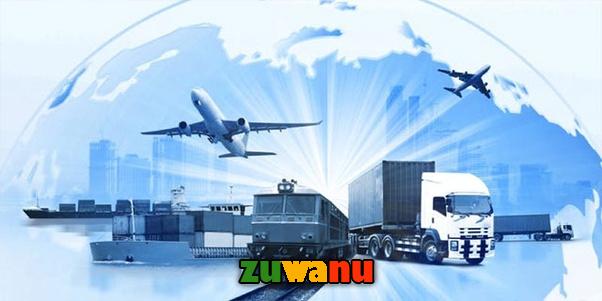The Future of Transportation: Modes, Pros and Cons, Railways in Developing Countries, Constraints to Inland Water Navigation, and Predictions for the Next 10 Years

Transportation
Transportation is a crucial aspect of modern society, allowing people and goods to move across different locations. It plays a significant role in economic growth, social development, and cultural exchange. There are various modes of transportation available today, each with its advantages and disadvantages. In this essay, we will discuss transportation, its different modes, the construction of railways in developing countries, constraints to inland water navigation, and the future of modern transportation in ten years.
Modes of transportation:
Road transport:
Road transport is the most commonly used mode of transportation worldwide. It involves the use of vehicles such as cars, buses, trucks, and motorcycles to transport people and goods from one place to another. Road transport is preferred for short distances because it is affordable, flexible, and accessible. However, it is not suitable for long distances, and it is highly affected by traffic congestion, weather conditions, and accidents.
Pros:
- Road transport is accessible, and it can reach almost every part of the world.
- It is flexible and can be tailored to individual needs and preferences.
- Road transport is relatively affordable, making it accessible to most people.
- It is suitable for short distances and can transport people and goods over short distances.
Cons:
- Road transport is highly affected by traffic congestion, leading to delays and increased travel times.
- It is not suitable for long distances and may result in increased travel costs.
- Road transport is highly affected by weather conditions, leading to delays and cancellations.
- It is not eco-friendly and contributes to environmental pollution.
- Rail transport: Rail transport involves the use of trains to transport people and goods over long distances. It is suitable for large quantities of goods and is preferred for long distances because it is fast and efficient. Rail transport is also relatively affordable, making it accessible to most people. However, it is not as flexible as road transport and is limited to specific routes.
Pros:
- Rail transport is fast and efficient and can transport people and goods over long distances.
- It is suitable for large quantities of goods, making it ideal for businesses.
- Rail transport is relatively affordable, making it accessible to most people.
- It is eco-friendly and contributes less to environmental pollution than road transport.
Cons:
- Rail transport is not as flexible as road transport and is limited to specific routes.
- It is not suitable for short distances and may result in increased travel costs.
- Rail transport is highly affected by weather conditions, leading to delays and cancellations.
- It requires significant investment in infrastructure, making it expensive to implement.
- Water transport: Water transport involves the use of ships and boats to transport people and goods across oceans, rivers, and lakes. It is suitable for long distances and large quantities of goods. Water transport is also eco-friendly and contributes less to environmental pollution than road or air transport. However, it is not as fast as air transport and is limited to specific ports and waterways.
Pros:
- Water transport is suitable for long distances and large quantities of goods.
- It is eco-friendly and contributes less to environmental pollution than road or air transport.
- Water transport is relatively affordable, making it accessible to most people.
- It can transport people and goods across oceans, rivers, and lakes.
Cons:
- Water transport is not as fast as air transport, leading to delays and increased travel times.
- It is limited to specific ports and waterways, making it less accessible than road or air transport.
- It requires significant investment in infrastructure, making it expensive to implement.
- It is highly affected by weather conditions, leading to delays and cancellations.
Air transport:

Air transport involves the use of airplanes to transport people and goods over long distances. It is suitable for long distances and is the fastest mode of transportation. Air transport is also flexible and can reach almost every
part of the world. However, it is also the most expensive mode of transportation and contributes significantly to environmental pollution.
Pros:
Air transport is the fastest mode of transportation, making it suitable for long distances.
It is flexible and can reach almost every part of the world.
Air transport is ideal for emergencies, medical evacuations, and urgent deliveries.
It is efficient and can transport large quantities of goods over long distances.
Cons:
Air transport is the most expensive mode of transportation, making it inaccessible to most people.
It contributes significantly to environmental pollution, affecting the health and wellbeing of people and the environment.
Air transport is highly affected by weather conditions, leading to delays and cancellations.
It requires significant investment in infrastructure, making it expensive to implement.
Reasons for the construction of railways in developing countries:
Economic development: The construction of railways in developing countries can contribute to economic growth and development. Railways provide a cheaper and more efficient mode of transportation for goods, enabling businesses to expand their operations and reach new markets.
Improved connectivity: The construction of railways can improve connectivity between different regions within a country, facilitating trade and cultural exchange. It can also improve access to healthcare, education, and other essential services.
Employment opportunities: The construction of railways can create employment opportunities for local people, stimulating economic activity and reducing poverty.
Reduced environmental impact: Railways are more eco-friendly than other modes of transportation, such as road or air transport. The construction of railways in developing countries can contribute to reducing environmental pollution and promoting sustainable development.
Increased tourism: Railways can provide a more scenic and enjoyable mode of transportation for tourists, promoting the development of the tourism industry and generating revenue for local economies.
Constraints to inland water navigation:
Limited infrastructure: Inland water navigation requires significant investment in infrastructure, including ports, channels, and locks. Developing this infrastructure can be expensive and time-consuming, making it challenging for countries with limited resources.
Limited access: Inland water navigation is limited to specific waterways and ports, making it less accessible than road or rail transport.
Weather conditions: Inland water navigation is highly affected by weather conditions, leading to delays and cancellations. Adverse weather conditions such as floods, droughts, and storms can make it challenging to navigate inland waterways.
Environmental concerns: Inland water navigation can have a significant impact on the environment, affecting water quality and wildlife habitats. It requires careful planning and management to ensure that environmental impacts are minimized.
The future of modern transportation in ten years:
The future of modern transportation is likely to be shaped by technological advancements, changing consumer preferences, and the need for sustainable development. Here are some of the trends that are likely to emerge in the next ten years:
Electric and autonomous vehicles: Electric and autonomous vehicles are likely to become more prevalent in the next ten years, as consumers demand more eco-friendly and efficient modes of transportation.
Shared mobility: Shared mobility services such as car-sharing, ride-sharing, and bike-sharing are likely to become more popular, as consumers seek more affordable and sustainable transportation options.
Hyperloop:
Hyperloop is a high-speed transportation system that uses magnetic levitation and low-pressure tubes to transport people and goods at high speeds. It is still in the early stages of development, but it has the potential to revolutionize transportation.
Urban air mobility: Urban air mobility refers to the use of electric vertical takeoff and landing (eVTOL) aircraft for transportation within urban areas. It is still in the early stages of development, but it has the potential to alleviate traffic congestion and improve mobility in cities.
Sustainable transportation: Sustainable transportation solutions such as electric vehicles, public transportation, and non-motorized modes
of transportation like walking and cycling are likely to become more prevalent in the next ten years as the need for sustainable development becomes more urgent.
Digitalization:
Digitalization is likely to play a significant role in the future of modern transportation. Advances in technology such as artificial intelligence, big data, and the Internet of Things (IoT) are likely to improve the efficiency and safety of transportation systems.
Decentralization: Decentralized transportation systems that rely on peer-to-peer networks, blockchain technology, and smart contracts are likely to become more prevalent in the future. These systems can help to reduce congestion, lower costs, and improve efficiency.
Shift towards public transportation: There is likely to be a shift towards public transportation as governments and consumers become more aware of the environmental and economic benefits of sustainable transportation.
Innovative transportation solutions: Innovative transportation solutions such as flying taxis, autonomous drones, and underground transportation systems are likely to emerge in the next ten years as technology continues to advance.
Collaboration: Collaboration between governments, businesses, and consumers is likely to play a critical role in shaping the future of modern transportation. Governments will need to develop policies and regulations that support sustainable transportation, businesses will need to invest in new technologies and infrastructure, and consumers will need to embrace new modes of transportation.
In conclusion, transportation is an essential aspect of modern society, and there are various modes of transportation available, each with its pros and cons. The construction of railways in developing countries can contribute to economic growth and development, while inland water navigation faces constraints such as limited infrastructure, limited access, weather conditions, and environmental concerns. The future of modern transportation is likely to be shaped by technological advancements, changing consumer preferences, and the need for sustainable development, and we can expect to see trends such as electric and autonomous vehicles, shared mobility, hyperloop, urban air mobility, sustainable transportation, digitalization, decentralization, innovative transportation solutions, and collaboration emerging in the next ten years.
